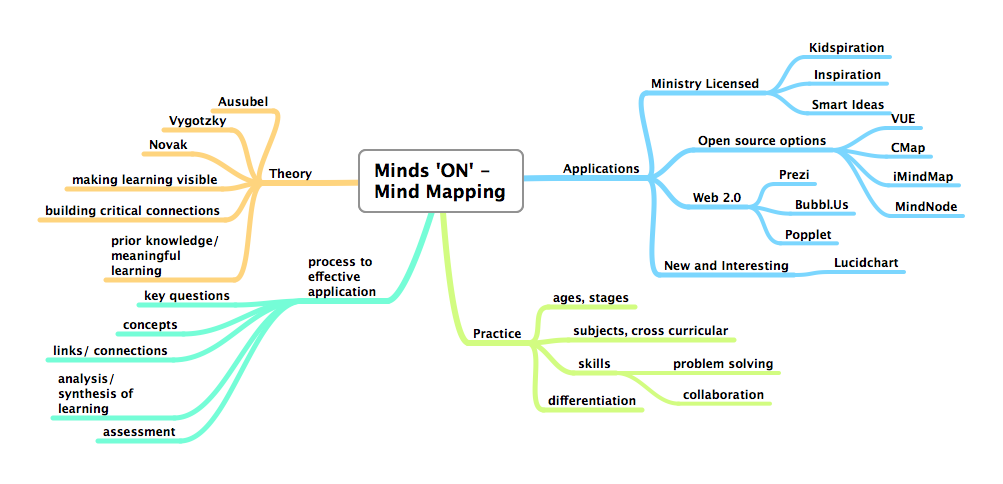Minds On Mapping
Response for Visual Intensive Learning Group Presentation
https://blogs.ubc.ca/etec522may12/2012/07/04/ventures-in-mapping-the-mind/
I have been interested in the application of concept mapping (since ‘mind mapping’ is a trademark name) to learning for some time. I have worked with students using Kidspiration and Inspiration, as well as Smart Ideas.(The websites for these tools provide lots of educational information.) Students take to this tool/technique of organizing their tasks quickly and easily. They enjoy using the transform tool where their concept map/brainstorming plan is flipped into an outline style. From there, they complete the sentences for each idea. Then they can work with a peer or teacher to extend and enhance their sentences with ‘rich words’ and descriptors. This type of mapping applies them as a tool to complete a task.
There are many mind mapping tools available, some free, others with some costs related. Each provides users with a toolbox of mapping elements to create, link and cross-link ideas, images or multimedia. Here is a list I found helpful when I looked for unique visual mapping tools. One of the easiest I have used is Mind Node (Free version) for a quick little map.
What Makes an Effective Mapping tool?
An effective mapping tool is easy to use, provides tools and affordances designed for the intended learner (age, application) and has technical support guides freely available in multiple media. The best mapping tools appear ‘simple’ on the surface and require little ‘start up’ time, yet should have depth in potential and presentation options.
An effective map captures top level and sub level ideas with multiple interactions between ideas. It connects learner with content in an engaging way. Adding multimedia, links, variety of shapes, lines, colours, images add interest to map creation tasks. Maps and the ways they are put together belong to the learner. Effective maps need to make sense for the learner, not the viewer. Ideas, links and connections should make sense for the creator and the viewer should be able to follow the lines and links. I have not used mapping as a window into thinking or as a means of managing cognitive overload but plan to integrate them into course work this coming year. The trick is keeping concept maps or visual maps small yet detailed enough to capture the enough of the concept to feel complete. I think it would be fun to create a ’50 ways to create concept maps’ similar to the ‘Cogdogroo’ wiki that uses web 2.0 tools to tell a story… Maybe a collaboration task starting with a collaborative concept mapping tool to organize the task?!

Reply